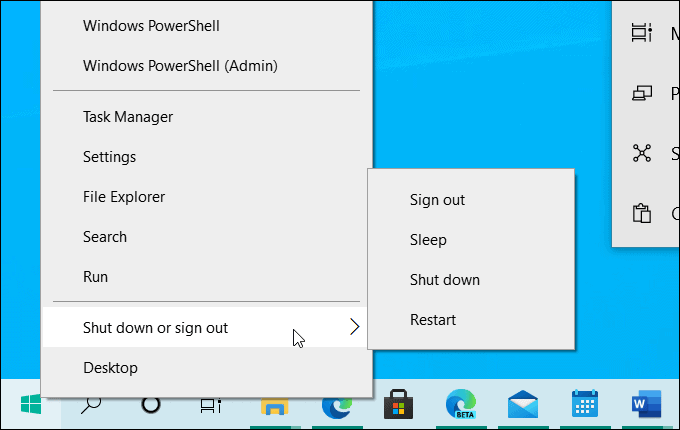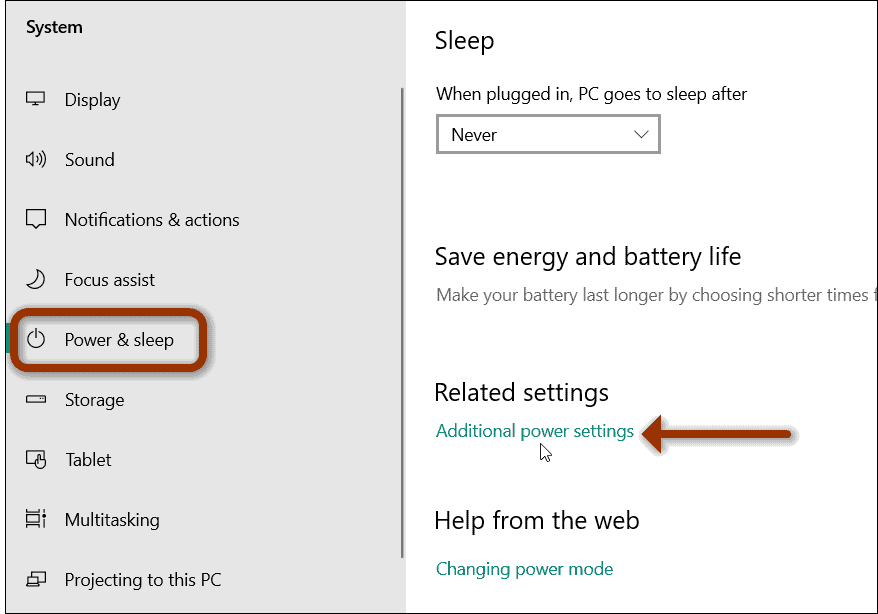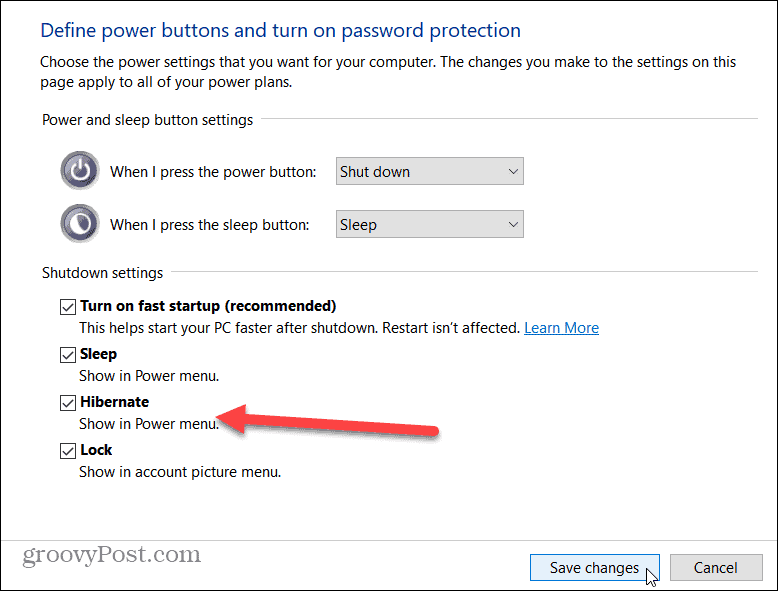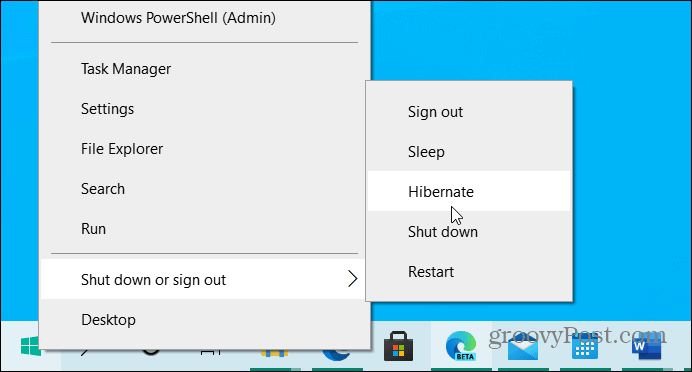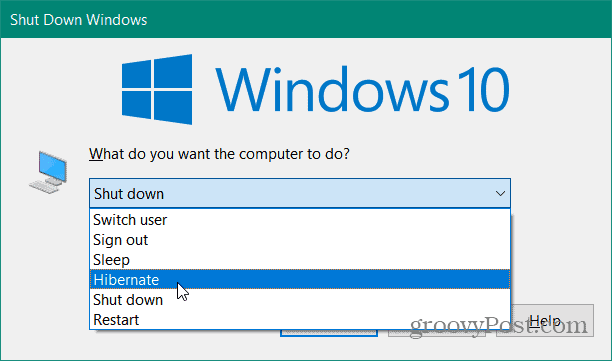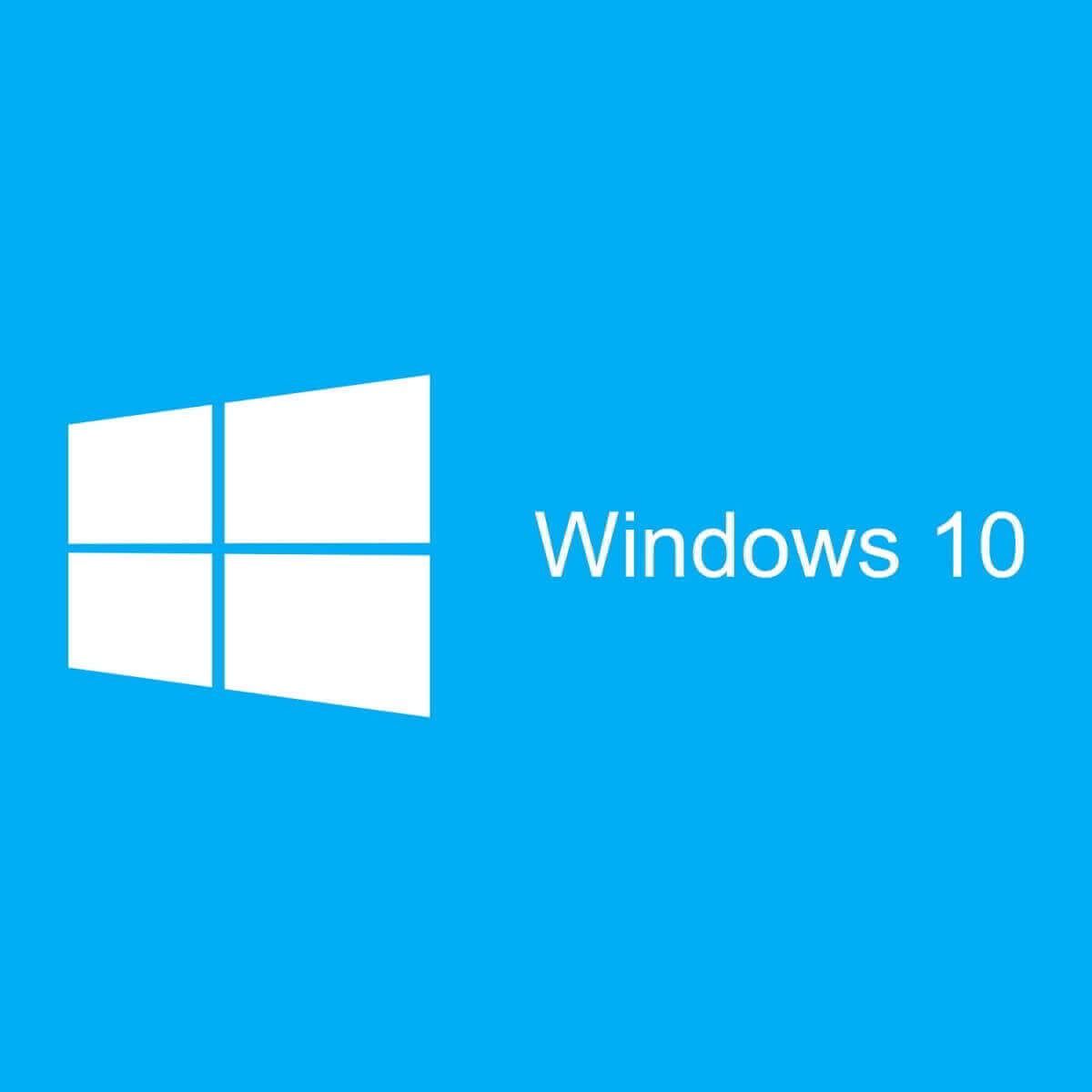How to add hibernate in windows 10
How to Enable Hibernate Mode on Windows 10
Hibernate mode puts your PC into a low power state that allows a shutdown without losing any of your work. Apps stay open and when you turn your computer on again you are back to where you left off. It uses less power than Sleep mode. It is a good choice if you know you won’t be using your PC for an extended period of time. However, the Hibernate option is missing from the Power button and other power areas on Windows 10. Here’s how to enable it.
Windows 10 Power Options
By default, when you open the Start menu in Windows 10 and select the Power button, there is no Hibernate mode listed.
Alternately, you can right-click the Start button or use Windows key + X keyboard shortcut to bring up the “power user menu” and go to Shutdown or sign out. Even there you will not find a Hibernate option.
Enable Hibernate for Windows 10
To enable Hibernate mode in Windows 10 head to Settings > System > Power & sleep. Then scroll down on the right-hand side and click the “Additional power settings” link.
That will open Power Options in the classic Control Panel. From the left column, click the “Choose what the power buttons do” link.
Next, you will see some different shutdown settings and power and button settings. Under the “Shutdown settings” section you should see a list of different options like Fast Startup, Sleep, and Hibernate. But all of those options are probably grayed out. To make Hibernate available click the “Change settings that are currently unavailable” link.
After clicking the link those options should become available. Check the Hibernate box (or other shutdown settings you want available) and make sure to click the Save changes button.
That’s all there is to it. The next time you open the Start menu and select the Power button you will see that “Hibernate” is now available from the menu.
It will also be listed if you right-click the Start button (Windows key+X) and go to “Shut down or sign out” on the menu.
It’s also worth noting that the old school method of using the keyboard shortcut Alt + F4 from the desktop still works, too. And by following the steps above it adds the Hibernate option there as well.
If you’re still running Windows 7 (which is no longer supported) you can read how to enable Hibernate mode in this article. If you’re not sure which mode to use on your Windows 10 computer, read our article on the differences between Sleep and Hibernate modes.
How to activate the Hibernate option in Windows 10
When you open the Power menu in Windows 10, you see the options for Sleep, Shut Down, and Restart. What if you want to add the Hibernate option to this menu? To use this feature, you have to activate it manually. That’s why, in this guide, we will give you step-by-step information on how to enable the Hibernate option in Windows 10, so that it is displayed in the Power menu. Here is how it is done:
What is Hibernate in Windows?
Hibernate (or suspend to disk) is a way to power off your PC or device so that you can resume your activity exactly where you left off. It is similar to Sleep, except that the system can keep the hibernation state for much longer, with lower energy consumption. Furthermore, the system can maintain the hibernation state even after you disconnect it from the power source. However, resuming operation from hibernation is not instant, like it is when using Sleep. The resume duration is similar to the startup procedure after an ordinary Shut Down.
Activating Hibernate uses additional space on the partition where Windows is installed. The space it takes is approximately equivalent to your RAM. This space is reserved for copying information about running programs when you use Hibernate. Therefore, when you resume from hibernation, all your opened programs, apps, and files are available exactly where you left off before starting the Hibernate procedure.
Read this article on Wikipedia, if you want to learn more technical details about Hibernate and the way it works.
How to activate the Hibernate option in Windows 10
First, log in with a user account that is an administrator on your Windows 10 PC, laptop, or tablet. Then, open the Control Panel and go to Hardware and Sound.
Look for the Power Options and click or tap on them.
In the left column, click or tap the link that says: “Choose what the power button does.”
You may see different Shutdown settings, including Hibernate, which is disabled, unlike the rest.
Click or tap the link that says: “Change settings that are currently unavailable.”
This action makes the Shutdown settings editable. Check the box next to Hibernate, and press Save changes.
You can now close the Control Panel.
You can now use the Hibernate option in Windows 10
The Hibernate option is now available in the Power menu of Windows 10, as you can see below. To use it, click or tap Start, then Power, and then Hibernate.
Do you prefer to use Hibernate instead of Sleep?
We like the Hibernate option, and we sometimes prefer it to Sleep. Most probably you do too, and that’s why you have read this tutorial. Before you close, tell us why you prefer Hibernate, and how often you are using it. Comment below and let’s discuss.
How to use hibernation to extend battery life on Windows 10
On Windows 10, hibernation is a power-saving feature that works by saving the content in memory onto the hard drive (inside the Hiberfil.sys hidden system file), allowing a complete shutdown of the device to extend battery life without losing your current work. The next time you resume, the previous session will load into memory, allowing to pick up where you left off.
Although hibernation doesn’t resume as fast as sleep on Windows 10, the feature will come in handy when you aren’t using the device for an extended period, when running out of battery, the laptop has a battery drain issue, or when you have to swap the battery (if you still have one of those devices).
In this Windows 10 guide, we’ll walk you through the steps to enable and configure hibernation to extend battery life on your laptop, or completely shut down your computer preserving your current session on resume.
How to enable hibernation on Windows 10
To enable hibernation using Command Prompt, use these steps:
Type the following command to confirm if hibernation is already enabled on your device and press Enter:
If Hibernate appears under the «The following sleep states are available on this system» section, then the feature is enabled, and you don’t need to continue with step No. 4.
Type the following command to enable the feature on your computer and press Enter:
powercfg /hibernate on
Once you complete the steps, hibernation will be enabled on your laptop. However, it’s not a feature available on all system configurations. If you’re unable to use hibernation on Windows 10, it could be for one of these reasons:
How to add hibernation option to Power menu on Windows 10
To add the hibernation option to the Power menu on Start, use these steps:
Click on Hardware and Sound.
Click on Power Options.
Click the Choose what closing the lid does option from the left pane.
Quick tip: If you’re using a desktop computer, you can select the Choose what the power buttons do option to get to the settings.
Check the Hibernate option.
After you complete the steps, the «Hibernate» option will be available in the Power menu in the Start menu, Lock screen, and Power-user menu (Windows key + X keyboard shortcut).
Customize power button to hibernate
To put your device into hibernation when pressing one of the power buttons or closing the lid, use these steps:
Click on Hardware and Sound.
Click on Power Options.
Click the Choose what closing the lid does option from the left pane.
Under the «Power and sleep buttons and lid settings» section, use the drop-down menu to allow your device to enter into the hibernation state when you press the power or sleep button, or when closing the laptop lid.
Once you complete the steps, your computer will enter into hibernation depending on your configuration.
How to configure hibernation settings on Windows 10
If you want to prolong battery as much as possible, you can adjust the power settings to allow your computer to hibernate automatically.
To change the hibernation timers on your computer, use these steps:
Click on Hardware and Sound.
Click on Power Options.
Click the Change plan settings option under the current power plan in use.
Click the Change advanced power settings option.
Use the On Battery option to set the number of minutes before putting the device into a hibernation state when the laptop is running on battery.
After you complete the steps, your device should go into hibernation automatically after the specified time you configured.
Similar to previous versions, hibernation offers a reliable method to save battery life while preserving your session. However, it’s the option that takes the most time to process a shutdown and resume. It requires writing the content in memory to the hard drive to hibernate and write the information back to memory to resume.
If you’re looking to save battery with quick resume times, perhaps the sleep option is the recommended method. Just remember that if your device loses power during sleep, you may lose unsaved work.
We’re focusing this guide on Windows 10, but hibernation has been around for a long time. You can refer to these instructions if you’re still using Windows 8.1 or Windows 7.
More Windows 10 resources
For more helpful articles, coverage, and answers to common questions about Windows 10, visit the following resources:
Mauro recommends all these affordable accessories
Hi, I’m Mauro Huculak, Windows Central’s help and how-to guru. I wrote the post you’re reading now, and I know the Windows OS inside and out. But I’m also a bit of a hardware geek. These are some of the affordable gadgets on my desk today.
Logitech MX Master Wireless Mouse ($72 at Amazon)
I know mice, and this is the one I use every day. The MX Master is a wireless high-precision mouse that’s very comfortable to use and has many great features, including the ability to connect with multiple devices, an infinite scroll wheel, back and forward buttons, all of which you can customize.
Ktrio Extended Gaming Mouse Pad ($12 at Amazon)
If you spend a lot of time typing, your palms and mouse will leave tracks on your desk. My solution was to start using gaming mouse pads, which are big enough for you to use the keyboard and the mouse comfortably. This is the one I use and recommend.
Supernight LED light strip ($20 at Amazon)
You could just use a regular light bulb in your office, but if you want to add some ambient lighting with different colors, an RGB LED strip is the way to go. This one is Mauro-approved.
We may earn a commission for purchases using our links. Learn more.
Age of Empires 4 devs talk about their vision of a true Age 2 successor
We now have a whole lot more information about Age of Empires 4, and we sat down with three developers to further discuss some of the details about the next big RTS game.
Expect new content for Age of Empires 2 and 3 Definitive Editions soon
Microsoft and its studio partners aren’t letting Age of Empires fade away. New content for Age of Empires 2 and 3 DE is planned, some sooner than later.
Review: HP ENVY 14 brings premium features to a fantastic creator’s laptop
These external monitors go perfectly with the Lenovo ThinkPad X1 Carbon
The Lenovo ThinkPad X1 Carbon is an excellent laptop, but what if you want to project the display onto a larger screen? You’ll need an external monitor for that. Here are our favorite options.
Add Hibernate option to the Start Menu in Windows 10 [QUICK METHOD]
If you want to save as much power as you can when using your computer you might want to consider using the Hibernate option. This option isn’t enabled by default on Windows 10 but that doesn’t mean that there’s no way to add it to the Start Menu.
Most desktop computers come with Sleep option enabled by default. Using the sleep option you can turn off most of your computer hardware and store your current information on your RAM.
While using Sleep mode, your computer will still use some power although a lot less. So it’s good to use Sleep option if you’re going to be away from your computer for short period of time.
One advantage of sleep mode is that it “wakes up” from Sleep mode in just a matter of seconds, so you can easily continue where you left off.
If your PC won’t exit Sleep Mode, check out this nifty guide to solve the problem. On the other hand, if you’re having trouble keeping your PC in sleep mode, then we recommend you to take a look at this article to find a solution.
Steps to add Hibernate option in Windows 10 start menu
As for the Hibernate option it works on a similar way, but it stores your open documents and running applications on your hard drive and shuts down your computer.
In a Hibernate mode, your computer uses zero electrical power, so it’s good to use this option if you’re going to be away for a while and you want to continue where you left off when you get back.
Only downside of Hibernation mode is that it takes a bit more to start compared to Sleep mode. Let’s see how to enable Hibernation mode on Windows 10:
If you can’t find your Power Plans, get them back by following the easy steps in this article.
Now you should have Hibernate option available in the Start Menu. If you have any comments, or questions, just reach for the comments below.
Unfortunately, various technical issues may occur after enabling the Hibernation mode on Windows 10. For example, your computer may fail to enter hibernation. In other cases, your computer may take too much time to wake up from hibernation.
In case you encounter any of these issues, you can use the troubleshooting guides listed below. Follow the instructions available in the respective guides and you should be able to fix the problem in just a few minutes:
How to add a Hibernate option to the Windows 10 Start menu
Windows 10 doesn’t include Hibernate in the shut-down options by default, but it’s easy enough to add it.
Today’s Best Tech Deals
Picked by PCWorld’s Editors
Top Deals On Great Products
Picked by Techconnect’s Editors
At the end of every day do you still dutifully close every file and program window before shutting down your PC? That’s the standard way to handle things, but for quite a few versions of Windows, Microsoft also offered the ability to use Sleep and Hibernate modes instead of just a regular shut down.
In Windows 10, however, Microsoft decided not to include hibernate with the rest of the shut down options under Start > Power by default. The good news is it’s easy to put the option back.
Why hibernate?
A hibernate option in Windows 10 under Start > Power.
Hibernation is kind of a mix between a traditional shut down and sleep mode primarily designed for laptops. When you tell your PC to hibernate, it saves the current state of your PC—open programs and documents—to your hard disk and then turns off your PC. Then when it’s time to start it up again all your previous work is ready and waiting for you.
Unlike sleep mode, it doesn’t use any power, but it does take longer to start up again.
Setting it up
To add Hibernate to Start > Power, click on the Cortana/search box in the taskbar and type power options. The first result you see should be a Control Panel setting of the same name. Click on that.
Click on Choose what the power buttons do on the left.
Once the Control Panel opens, select Choose what the power buttons do from the left-hand navigation panel.
Next, click the link at the top of the window.
Then at the top of the next screen click on the link that says Change settings that are currently unavailable.
Now you can add Hibernate to your power options under the Start menu.
Now scroll down to the bottom and under Shutdown settings click the checkbox next to Hibernate. Next, click Save changes and you’re done.
Go to Start > Power and you should now see Hibernate among all the rest of the shut-down options.
Ian is an independent writer based in Israel who has never met a tech subject he didn’t like. He primarily covers Windows, PC and gaming hardware, video and music streaming services, social networks, and browsers. When he’s not covering the news he’s working on how-to tips for PC users, or tuning his eGPU setup.
